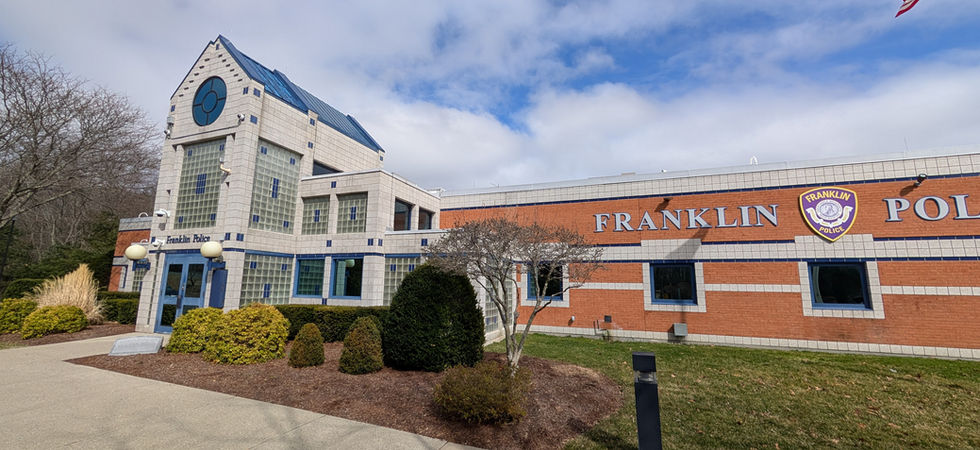

EXISTING CONDITIONS
The current police station is no longer equipped to support the demands of modern law enforcement. See firsthand the challenges our officers face—watch the video and browse the photos below to understand why a new facility is essential for the safety and efficiency of our police force.
Stay informed on the plans, progress, and community impact of Franklin’s new police facility while we build a safer future for the police department and the greater community.
INADEQUACIES OF THE CURRENT FACILITY
Restricted Workspaces for Officers and Detectives
Detectives lack a dedicated forensic workspace, often clearing off their desks to conduct fingerprint and evidence processing. The interview and interrogation rooms are outdated and improperly located, forcing officers to repurpose other areas for crucial investigations. The current detectives' office, originally designed for far fewer personnel, is now overcrowded, making casework and collaboration difficult. Modern police stations are designed with secure, functional spaces for these activities—something Franklin currently lacks.
The designated report-writing area is too small for the number of officers who need to use it. The space is frequently overcrowded, forcing officers to complete reports at the front desk or other improvised locations, leading to inefficiencies and disruptions in daily operations. There is also no secure storage for paperwork, making organization difficult and potentially compromising case-sensitive materials.
Overburdened Evidence and Storage Areas
The evidence room, last modernized in 2016, is once again nearing capacity. Large evidence items must be stored in an external shipping container, which poses security risks. There is no dedicated space for processing evidence, forcing officers to use makeshift areas that compromise efficiency and security.
Mandated paper records take up valuable space that was never intended for long-term storage. Despite regular purging of outdated files, there is still insufficient room, leading to cluttered hallways and storage areas. The absence of humidity and temperature control further threatens the integrity of crucial documents.
Insufficient Training and Meeting Spaces
Training is a core function of any police department, yet Franklin’s station lacks a dedicated training facility. The small classroom cannot accommodate full department meetings or essential scenario-based training. As a result, officers must use the Fire Department’s Emergency Operations Center, limiting flexibility and scheduling options. Additionally, there is no space for defensive tactics, use-of-force simulations, or firearms training. The absence of a firearms range or virtual reality training system hinders officers from receiving the best possible preparation for real-world scenarios. A larger, well-equipped training space would enhance officer readiness and provide opportunities for community training programs.
Locker Rooms and Fitness Facilities Are Undersized
With an increasing number of female officers and civilian personnel, the women’s locker room no longer has enough space. The men’s locker room is also over capacity, forcing command staff to relocate their lockers to their offices. The lockers themselves are outdated, lacking proper ventilation, electrical outlets for charging equipment, and sufficient space for storing modern police gear. The fitness room is too small for more than two people at a time, limiting officers’ ability to stay in peak physical condition.
Parking and Security Challenges
The station’s parking area is inadequate for the growing number of personnel, leaving officers to park in unsecured visitor areas or across the street. Additionally, there is no gated security for police vehicles, increasing risks to department assets. With the increasing number of cruisers and department vehicles, the current parking setup is no longer sufficient, leading to congestion and inefficiencies.
The current sally port, originally designed for vehicle access and secure prisoner transport, is now being used for additional storage due to a lack of space elsewhere in the station. This dual-purpose use compromises the safety and efficiency of prisoner transfers, creating potential security risks. A modern facility would include a dedicated, properly sized sally port to handle multiple vehicles and ensure secure operations.

























